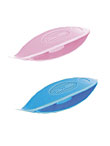

The much more famous thread in tatting is labeled the dual stitch, which really is a knot with a half hook.You construct loops, creatively merge them to get themes and use variation to produce various sorts of unique details. Necessarily, to began, you will need to understand that tatting includes a lot of linkages, swirls, stitches, and bracelets. Like all those other handicrafts, tatting seems to have its own fundamental knots you can know when you start.Other useful Tips and Trivia you can consider with regards to tatting needles: Cro-tatting loops (and thread tatting until a ring is shuttered) quickly break, except tatting performed with a cutter. Many tatting teachers suggest using such a needle and thread and a tatting thread to operate on cro-tatting templates.

Most people find cro-tatting harder than lace needle felting or needle spinning yarn. In contemporary structures, the rings are tatted starting in the early twentieth century as well as the ridges or collars are knitted. The jewels are tatted in their most primitive sense, as in solitary-shuttle tatting, with such a width of pure yarn among both each other. Structures are accessible online and are equally distributed among both thread and quilt. “Crochet tatting” structures were reviewed in the 19th century that apparently called for a quilting leash. Maybe one could cross-tat with a sewing loop on the precious metals or a straightforward plastic hook.

The cro-tatting method is a tatting thread that ends with a crochet hook. Cro-tatting incorporates crochet and needle tatting. If you’re a knitter who wants to understand tatting, then that’s a perfect starting point. The connections that you make originate from tatting, though. This mechanism provides a centralized tool, a tiny cross stitch needle. It is a blending between both the tatting and knitting. Once you grasp the necessary elements, it’s really quite simple. This requires some perseverance and even a little exercise. This same method for needle felting is to undertake in constant flux the number of innovations by the right and left arms as you construct the circuits and wrap the strands. The left hand would be used to navigate the stitch-forming material. Old vintage shuttles and exclusive shuttles were pursued after by some individuals who did not do itįor the tatting shuttle, your right shoulder can be used on the left thumb to guide the shuttle across the fabric. Shuttles also have a tip or loop at one edge to assist in lace development. Culturally, this is less than 3 inches of precious stones people are pointing-oval shapes however, shuttles appear in a range of different sizes and shapes. A tatting shuttle promotes tatting by carrying and supporting a width of incision thread through the loops to make the essential knots. Shuttle tatting is the earliest form of making the tatted thread. They were using a Weaving shuttle-like tool, but narrower in scale. This has been handed down from both the decorative stitching done by the navy ships. The initial model of the art form was possibly this type. Here are the top 3 different types of tattling needles: Traditionally tatting was mainly used to add thorough shading and design to boost the value of the apparel. You render loops, for instance, but you also borrow from spinning to establish the needle felting pattern. This is a reference to most of the other art and craft and is a blend of various methods used in both. Tatting is a technique used to construct complicated knotwork using threads and materials. Tatting is often used to make lace textured surfaces and shawls which are much more identical to crochet edges. If you particularly like crochet fabric, you will find tatting fun. When you love crocheting, sewing, knitwear, and weaving, there’s a good possibility you’ll enjoy dating. Tatting is one type of antique embroidery. Tatting may be used to consider making lace progressively moving and even some doilies, tassels, accouterments such as bangles and brooches, and other precious materials. Tatting is a methodology for manufacturing a notably long-lasting lace from either a sequence of tangles and loops.


 0 kommentar(er)
0 kommentar(er)
